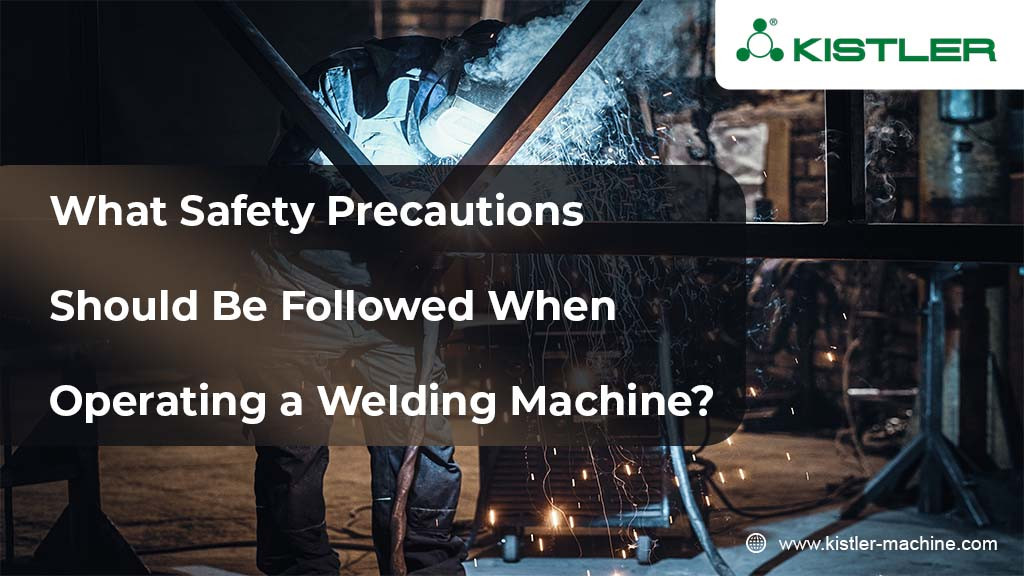
WHAT SAFETY PRECAUTIONS SHOULD BE FOLLOWED WHEN OPERATING A WELDING MACHINE?
Welding Is A Critical Process Used Across Various Industries To Join Metals And Create Sturdy Structures.
However, Working With Welding Machines Can Pose Significant Risks If Safety Precautions Are Not Followed Diligently.
From Electrical Hazards To Exposure To Harmful Fumes, Welders Face Potential Dangers
That Demand Careful Attention. In This Blog, We Will Discuss Essential Safety Precautions To Ensure The Well-Being Of Welders And Others In The Vicinity During Welding Operations.
Personal Protective Equipment (PPE) Is The Foundation Of Welding Machine Safety, Serving As A Crucial Barrier To Safeguard Welders From Potential Hazards.
The Proper Selection And Use Of PPE Are Essential To Ensure The Well-Being Of Welding Operators. Here Are The Key Components Of PPE For Welding:
1) Welding Helmet:
A High-Quality Welding Helmet Equipped With A Protective Lens Is Indispensable, As It Shields The Face And Eyes From Harmful Sparks, Intense Light, And Infrared Radiation Emitted During The Welding Process.
2) Welding Gloves:
Flame-Resistant Gloves Are A Must-Have To Protect The Hands From The Heat, Sparks, And Hot Metal Splatters That Are Common In Welding Operations.
3) Welding Apron:
Wearing A Fire-Resistant Apron Made Of Suitable Materials Provides An Extra Layer Of Protection For The Body And Clothing, Minimizing The Risk Of Burns And Injuries.
4) Welding Jacket:
A Sturdy, Flame-Retardant Welding Jacket Is Vital To Provide Further Protection From Heat And Sparks, Especially In Areas Where The Risk Of Exposure Is High.
5) Welding Boots:
Heat-Resistant Boots With Steel Toes Are Essential To Shield The Feet From Falling Objects And Hot Surfaces, Reducing The Potential For Foot Injuries.
6) Respiratory Protection:
Depending On The Process Sed And The Materials Involved, A Welding Respirator Or Mask May Be Necessary To Prevent The Inhalation Of Hazardous Fumes And Gases, Ensuring Respiratory Safety.
By Ensuring The Proper Use Of This Essential Personal Protective Equipment, Welders Can Confidently Focus On Their Tasks While Mitigating Potential Risks And Maintaining A Safe Working Environment.
Proper ventilation is crucial when operating a welding machine. Welding produces fumes, gases, and vapors that can be harmful if inhaled.
Ventilation systems should be in place to remove these by-products from the welding area. When working indoors, ensure there are exhaust hoods or fans that effectively capture and remove the welding fumes.
When welding outdoors or in open areas, be aware of wind direction to avoid fumes blowing directly towards the welder or others nearby.
Welding involves extremely high temperatures and sparks that can ignite flammable materials. Fire safety should be a top priority. Here are some fire safety precautions to follow:
1) Clear the work area:
Ensure the work area is free from flammable materials, such as paper, wood, or fuel sources.
2) Have Fire Extinguishers:
Always keep appropriate fire extinguishers nearby, and ensure they are regularly inspected and in working condition.
3) Fire Watch:
After completing welding operations, designate someone to be on fire watch duty to monitor the area for any smouldering or potential fire hazards.
4) Welding Blankets:
Use welding blankets or fire-resistant barriers to protect nearby combustible materials from sparks and heat.
Welding machines operate on high electrical currents, making electrical safety a critical aspect of welding machine operation. Follow these precautions to minimize electrical hazards:
1) Inspect Cables:
Regularly inspect welding cables and connections for damage. Damaged cables should be promptly replaced.
2) Grounding:
Ensure the welding machine is correctly grounded to prevent electrical shocks.
3) Avoid Damp Areas:
Keep welding equipment away from wet or damp surfaces to prevent electrical shorts.
4) Proper Wiring:
If using extension cords, ensure they are rated for the appropriate amperage and length.
Creating a safe work environment is essential for preventing accidents and injuries. Some key considerations include:
1) Mark Hazardous Areas:
Clearly mark hazardous areas and establish restricted zones to prevent unauthorized personnel from entering the welding area.
2) No Overcrowding:
Avoid overcrowding the welding area with unnecessary personnel to reduce the risk of accidents.
3) Proper Lighting:
Ensure sufficient lighting in the work area to improve visibility and reduce the risk of tripping or stumbling.
4) Secure Workpiece:
Ensure the workpiece is securely clamped or held in place to prevent it from shifting during welding, which can cause accidents or poor-quality welds.
Proper training and certification are vital for welders. Only trained and qualified individuals should operate welding machines. Training should cover not only the technical aspects of welding but also safety procedures and emergency protocols. Periodic refresher training should also be encouraged to keep welders updated with the latest safety practices.
Operating a welding machine demands meticulous adherence to safety precautions to protect welders and others from potential hazards. Personal Protective Equipment (PPE), adequate ventilation, fire safety measures, electrical precautions, maintaining a safe work environment, and proper training are crucial elements of welding machine safety.
By diligently following these safety guidelines, welders can ensure a secure work environment and reduce the risk of accidents, creating a safer and more productive welding experience for everyone involved.